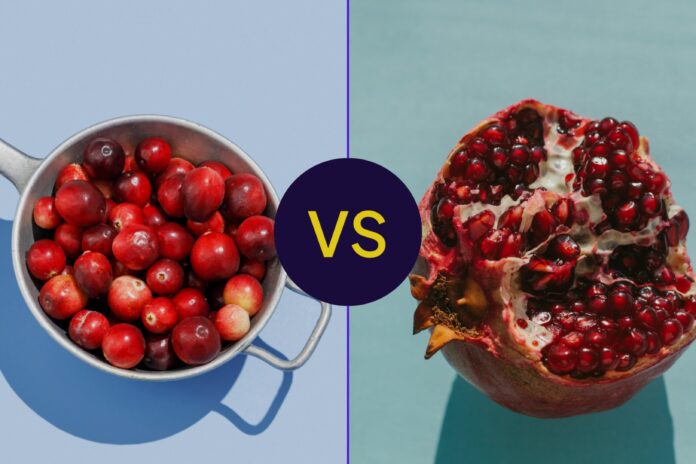Both cranberries and pomegranates are nutrient-rich fruits, but they excel in different areas. While both contribute to a healthy diet, cranberries deliver more vitamin C, while pomegranates provide a greater fiber content. Understanding these differences can help you maximize specific health benefits.
Vitamin C: Cranberries Take the Lead
Cranberries are a superior source of vitamin C. A 100-gram serving contains 14 milligrams, representing 15.6% of the Daily Value (DV). Pomegranates offer a respectable amount, with 11.4% DV in the same serving size, but cranberries edge them out.
This is important because vitamin C is linked to significant health advantages. Research suggests higher intake reduces the risk of certain cancers (breast, gastric, pancreatic, lung, prostate) and may lower inflammation, potentially protecting against heart disease and neurodegenerative conditions like Alzheimer’s.
Fiber: Pomegranates Offer More Bulk
Pomegranates are richer in fiber, boasting 4 grams per 100-gram serving (over 14% DV). Cranberries provide 3.6 grams in the same amount, making them a good source, but not as potent.
Fiber’s benefits are well-established: it supports digestive health by feeding gut bacteria, promotes regular bowel movements, and aids in weight management by slowing digestion and triggering fullness hormones.
Side-by-Side Comparison
Here’s a quick reference to the key nutritional differences:
- Vitamin C: Cranberries (15.6% DV per 100g) > Pomegranates (11.4% DV per 100g)
- Fiber: Pomegranates (14% DV per 100g) > Cranberries (approximately 13.5% DV per 100g)
Both fruits offer valuable nutrients; choosing between them depends on your priorities. If maximizing vitamin C intake is the goal, cranberries are the better choice. For a higher fiber boost, pomegranates are preferable.
